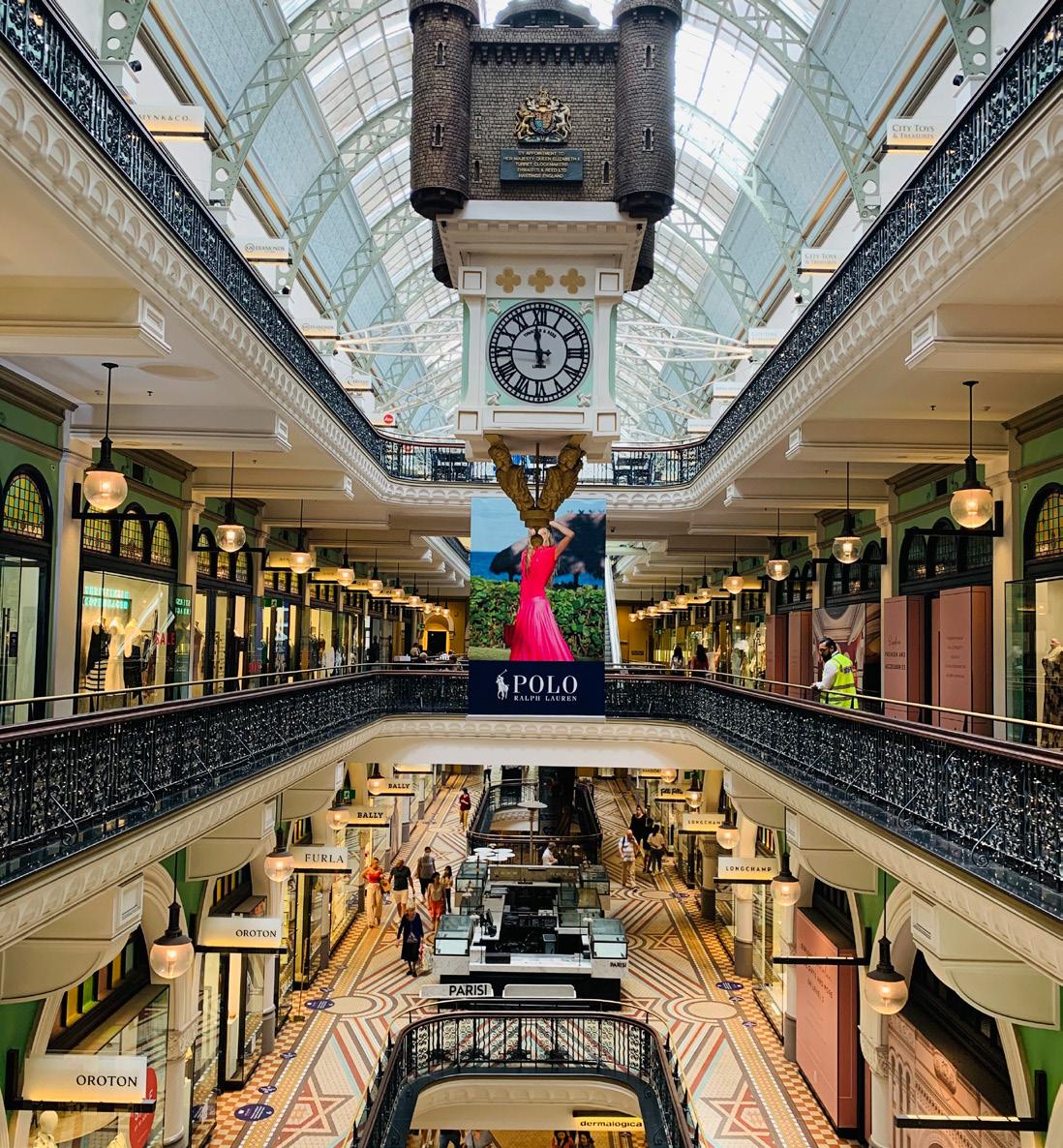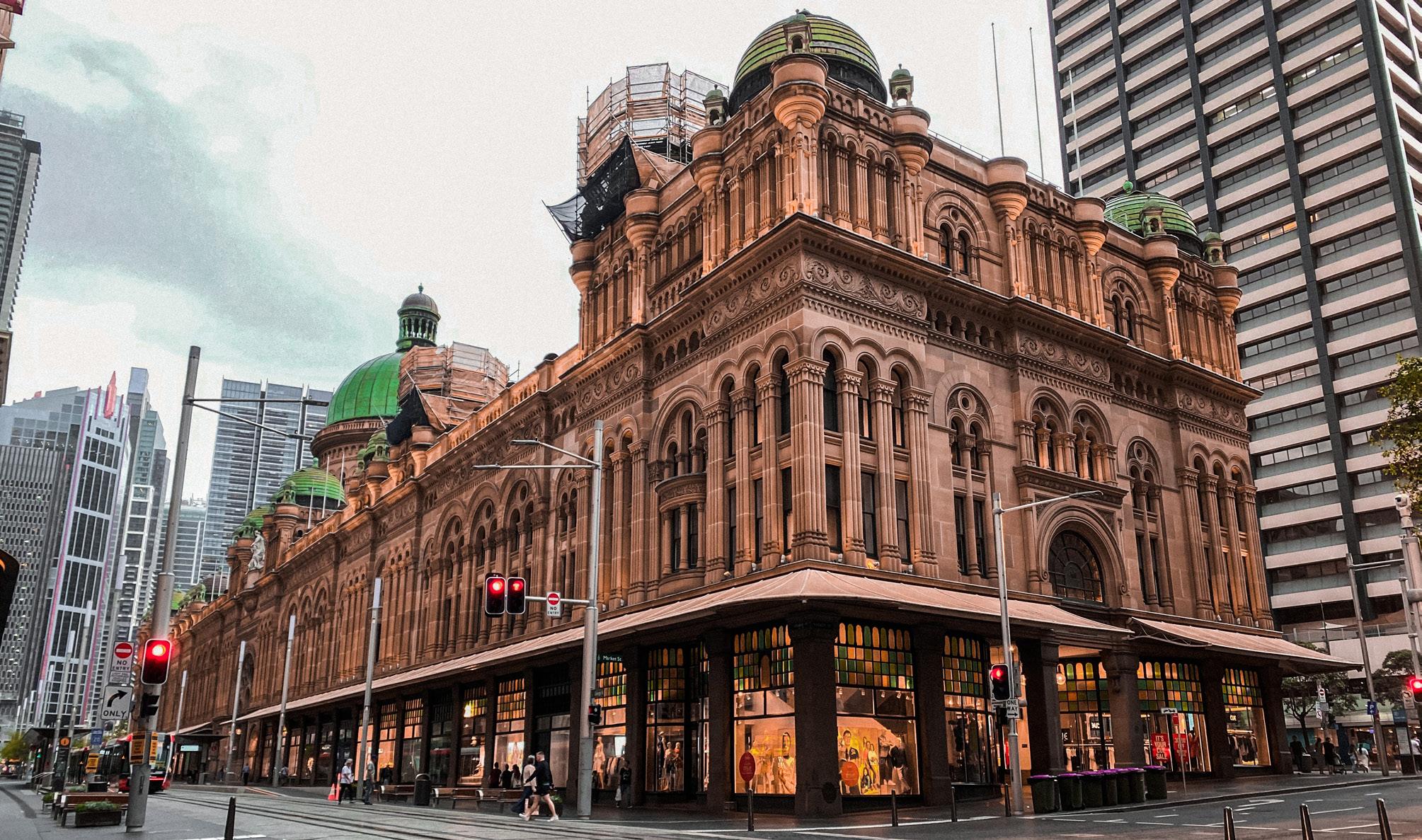
2 minute read
HISTORY
THE QUEEN VICTORIA BUILDING (known to locals as the QVB) is located in the heart of the City of Sydney. It is one of the city’s most iconic landmarks but it nearly didn’t survive to the present day. There have been numerous occasions where it faced demolition, only for it to undergo interior and exterior remodelling to carry on with its long and varied life.
It all began in 1810 when Governor Macquarie designated the empty land, where the QVB stands today, to be used as a produce market. This was later confirmed and set in stone with a general order by the government at the time. But it wasn’t until 1893 that construction of the QVB first began in the hope to boost the economy after a financial recession.
Advertisement
The QVB could have turned out very different to what we know today. Scottish architect George McRae originally presented the council with four designs in different styles: Gothic, Renaissance, Queen Anne and Romanesque. The Romanesque style was eventually voted on and it was built in honour of the Monarch’s Diamond Jubilee.
The iconic domes were made by the Ritchie Brothers, a steel and metal company that produced trains and farming equipment at the time. When completed, the building stretched a massive 30 metres wide and 180 metres long and held 58 shops, including hairdressers, coffee shops, tailors, tobacconists, fruit shops, a chemist, coffee palace, warehouses, storerooms and offices. It was intended to serve as a central shopping district for the growing city. The building officially opened to the public on the 20th of July 1898, and it quickly became one of Sydney’s most popular shopping destinations.
Over the years, the QVB has undergone several renovations and expansions. During the 1930s it was extensively remodelled in an Art Deco style and in between 1959 and 1971 it became home to the Sydney City Council. During this time, it was proposed that the QVB should be demolished and made into a parkland and civic square with a shopping centre underneath. However, in 1971, Emmet McDermott who was Lord Mayor of Sydney at the time committed to restoring the QVB to its former glory and bringing back its Romanesque design.
Remodelling was a slow process which commenced in 1984 and eventually reopened to the public again in 1986. And, after standing for nearly 100 years, the QVB had come back full circle to its original style and former glory.
In 2009 there was one more refurbishment which mainly focussed on the interiors accessibility and beautification, with internal painting, carpeting areas, escalators to travel between the different levels and added signage and bathrooms.
Today, the QVB is widely regarded as one of the most beautiful and historic buildings in Sydney. It is home to a wide range of shops and restaurants, and it is also used for a variety of cultural events and exhibitions. The building’s central location and stunning architecture have made it a popular shopping destination or coffee stop, bringing it back to what Governor Macquarie originally designated it for over 100 years prior.
After such a varied past, it will certainly be interesting to ponder what the building’s future could look like in the next few hundred years. However, it will be highly unlikely to have such a dramatic future as its eventful past, as it is now registered as a heritage listed building and owned by the City of Sydney as of the 5th of March 2010.












